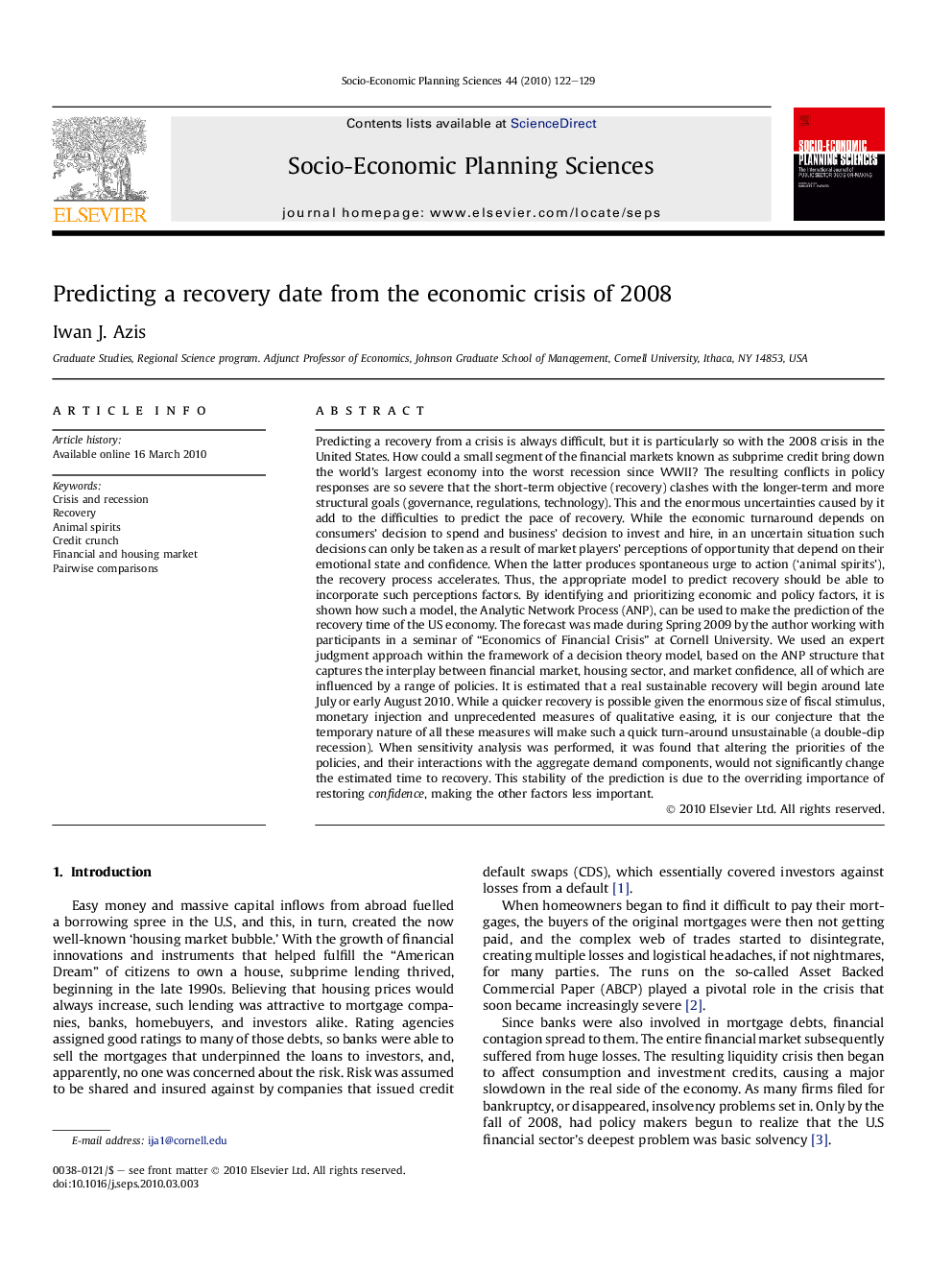| کد مقاله | کد نشریه | سال انتشار | مقاله انگلیسی | نسخه تمام متن |
|---|---|---|---|---|
| 987948 | 935201 | 2010 | 8 صفحه PDF | دانلود رایگان |

Predicting a recovery from a crisis is always difficult, but it is particularly so with the 2008 crisis in the United States. How could a small segment of the financial markets known as subprime credit bring down the world’s largest economy into the worst recession since WWII? The resulting conflicts in policy responses are so severe that the short-term objective (recovery) clashes with the longer-term and more structural goals (governance, regulations, technology). This and the enormous uncertainties caused by it add to the difficulties to predict the pace of recovery. While the economic turnaround depends on consumers’ decision to spend and business’ decision to invest and hire, in an uncertain situation such decisions can only be taken as a result of market players’ perceptions of opportunity that depend on their emotional state and confidence. When the latter produces spontaneous urge to action (‘animal spirits’), the recovery process accelerates. Thus, the appropriate model to predict recovery should be able to incorporate such perceptions factors. By identifying and prioritizing economic and policy factors, it is shown how such a model, the Analytic Network Process (ANP), can be used to make the prediction of the recovery time of the US economy. The forecast was made during Spring 2009 by the author working with participants in a seminar of “Economics of Financial Crisis” at Cornell University. We used an expert judgment approach within the framework of a decision theory model, based on the ANP structure that captures the interplay between financial market, housing sector, and market confidence, all of which are influenced by a range of policies. It is estimated that a real sustainable recovery will begin around late July or early August 2010. While a quicker recovery is possible given the enormous size of fiscal stimulus, monetary injection and unprecedented measures of qualitative easing, it is our conjecture that the temporary nature of all these measures will make such a quick turn-around unsustainable (a double-dip recession). When sensitivity analysis was performed, it was found that altering the priorities of the policies, and their interactions with the aggregate demand components, would not significantly change the estimated time to recovery. This stability of the prediction is due to the overriding importance of restoring confidence, making the other factors less important.
Journal: Socio-Economic Planning Sciences - Volume 44, Issue 3, September 2010, Pages 122–129